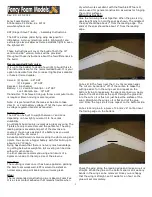
Vers.1.0
01.06.2011
S. 16 / 39
Then at the beginning of the second phase the g-forces increase rapidly and the
leading edge will lean towards the ground. In a fully developed deep spiral, the
leading edge is almost parallel to the ground. The maximum sink rate with the
FACTOR 2 can get up to 25m/s and more.
The first attempts to fly a deep spiral should be stopped clearly before reaching
the second phase to get used to the quick rotation and to practice the exit
without pendulum swinging. The exit should be performed by simply releasing
the inner brake with a neutral weight-shift. The FACTOR 2 will then decrease
its bank angle and go back to normal flight. To avoid a pendulum movement,
the inner brake has to be pulled in the moment the wing wants to reduce its
bank rapidly.
By applying the inner brake again, you force the glider to exit the spiral
movement not rapidly but during two or three rotations. It is very important to
master this exercise before continuing to the second phase of the deep spiral.
The pilot will feel the entering of this phase by the suddenly increased g-force.
In this moment, the pilot is being pushed to the outer side of the harness. It is
important to not counteract. So the pilot should lean to the outer side to avoid a
stable spiral. (See below)
If the pilot weight shifts to the outer side, the spiral movement will get slower
as soon as the pilot releases the inner brake. The rest of the exit works as
explained above for the first phase of the deep spiral.
If the pilot shifts his weight clearly to the inner side, the FACTOR 2 might stay
in a deep spiral, even when releasing both brakes. In this case, it helps to apply
the outer brake, or both brakes and of course to shift the weight to the outer
side.
Please don’t underestimate the difficulty of learning the deep spiral. The sink
rates are a lot higher than what you are used to from other manoeuvres and the
fast rotation might lead to disorientation. The high g-loads of up to 3g make the
manoeuvre even more demanding as you might have problems like the so
called “black out”, where you temporarily lose your vision due to the g-load. It
is very important to get a feeling for the reactions of your body to this
manoeuvre.
If you practice it well, it is a fun manoeuvre that enables you to loose height
faster than with any other manoeuvre.
















































